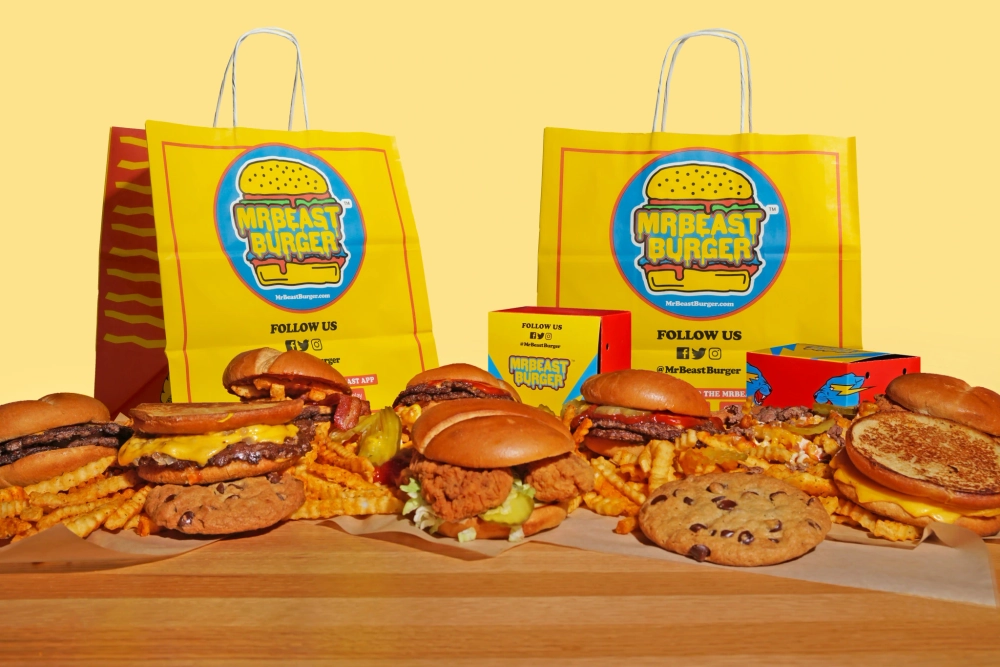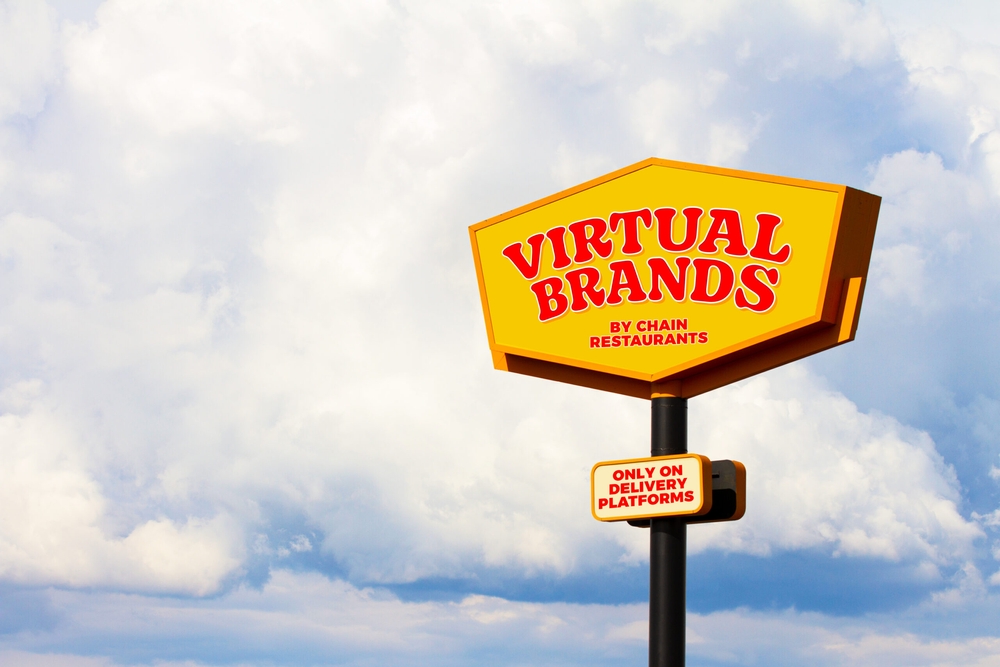If you’re a part of the restaurant industry, there’s a good chance you’re familiar with the March 2023 news about Uber Eats removing thousands of virtual brands from their platforms. But, what does this shift actually mean for the virtual brand landscape? Does it still make sense to venture into creating or running a new virtual brand out of your restaurant? In this article, you’ll discover why now might just be the best time to launch a virtual brand!
Why Uber Eats Decided to Remove Some Virtual Brands
It all started when Uber Eats noticed a surge in the number of virtual brands on their platform. These brands are essentially delivery-only restaurant concepts that are fulfilled out of multiple brick & mortar locations. Virtual brands were created to leverage the ever-growing meal delivery demand. However, the boom of virtual brands led to significant clutter within the app, prompting Uber Eats to take action.
By 2023, the number of virtual brands on Uber Eats had quadrupled to over 40,000 from 2021 figures. Despite accounting for 8% of Uber Eats’ storefronts listed in the U.S. and Canada, they made up less than 2% of orders in the region, showing a discrepancy between the number of brands and their actual patronage.
This surge of virtual restaurant concepts, where one menu was being fulfilled out of different brick & mortar locations, left some users confused. Further, in cases where the food quality didn’t match that featured in the images used for the virtual brand, customers may begin to lose trust in the platform. Recognizing this, Uber Eats decided it was time to clean up the clutter, and launched their new initiative to remove redundant virtual brands, making way for a healthier and more trustworthy virtual brand landscape.
Examples of Virtual Brands Removed from Uber Eats
To better understand the extent of the shift, let’s take a look into a few examples of virtual brands that were impacted by Uber Eats’ new policy:
A single deli in New York City became the umbrella for 14 different virtual brands. Although each had its own branding and name, they all had one glaring similarity – they offered the exact same sandwiches.
Similarly, a sports bar in Colorado had diversified its presence in the virtual food scene by establishing 12 unique online identities. The catch? All these distinct brands were selling identical breakfast burritos.
Perhaps the most striking example was a Pakistani restaurant based in San Francisco. Despite being a single entity, it had gone to the lengths of replicating its menu 20 times, each under a different virtual brand.
Breaking Down Uber Eats’ New Policies
In order to address the issue of redundancy and maintain a high standard of quality, Uber Eats introduced new guidelines that will significantly change the landscape of virtual brands on their platform. These rules were specifically designed to ensure each brand offers a unique and high-quality dining experience.
Firstly, the rules require each virtual restaurant to have a distinct menu. To ensure this, Uber Eats mandated that a virtual restaurant’s menu items must be “at least 60% different” from any other virtual brands operating from the same physical location. This policy also extends to the brand’s “parent restaurant,” or the brick & mortar location out of which the virtual brands are fulfilled. . This move aims to prevent restaurants from having different identities that offer the same exact food, therefore curbing the problem of repetitive listings.
Secondly, Uber Eats has put rigorous quality checks into place. Both the virtual brand and its parent restaurant are now required to maintain a 4.3-star rating or higher on the app. Finally, , they must have 5% or less canceled orders , and 5% or less order errors. Any virtual restaurant that fails to comply with these standards risks being removed from the Uber Eats platform.
These stringent guidelines not only ensure the uniqueness of each restaurant listing on the app, but also emphasize the food quality and quality of service they must provide.
Why Now is the Perfect Time to Launch Your Virtual Brand
The recent release of Uber Eats’ new policies presents a unique and opportune moment for restaurant owners and entrepreneurs looking to venture into the virtual brand space. These policy changes, aimed at enhancing the quality and diversity of virtual brands, create the ideal environment to launch a successful virtual brand. Here’s why:
Reduced Competition
With the removal of thousands of redundant virtual brands from Uber Eats, the landscape becomes less cluttered and competitive. This means that new virtual brands entering the market have a better chance of standing out and capturing the attention of customers. The focus on quality over quantity allows emerging virtual brands to make a meaningful impact and attract a loyal customer base.
Enhanced Differentiation
The guidelines set by Uber Eats require virtual brands to have distinct menus that are significantly different from others operating out of the same physical location. This emphasis on uniqueness provides an opportunity for restaurant owners to showcase their creativity and culinary expertise. By offering innovative, diverse, and specialized menu options, virtual brands can carve out their own niche and appeal to specific customer preferences.
Customer Trust and Confidence
The implementation of stricter quality standards by Uber Eats may improve consumer trust in the concept of virtual brands as a whole. Customers can now have more confidence when trying out a virtual brand, knowing that they are backed by the platform’s commitment to quality and accountability. As a result, restaurant owners launching virtual brands can leverage this increased trust to attract a wider customer base and foster long-term customer loyalty.
Access to a Growing Market
The popularity of food delivery services continues to rise, and the demand for virtual brands is on the upswing. By launching a virtual brand now, restaurant owners can tap into this expanding market and capitalize on the increasing consumer preference for convenient and diverse dining options. With the right marketing strategies and a compelling virtual brand concept, entrepreneurs can position themselves for success in this evolving industry.
Flexibility and Cost Efficiency
Virtual brands offer a unique opportunity for brick-and-mortar restaurants to diversify their offerings and reach wider audiences, all without substantially increasing overhead costs. By harnessing the power of digital platforms like Uber Eats, restaurant owners can create multiple virtual brands under the roof of their physical establishment. This innovative approach allows them to essentially operate multiple restaurants within their existing infrastructure, thereby enhancing order volume and revenue.
In the newly restructured landscape, well-managed virtual brands can enjoy greater visibility and potentially higher customer engagement, making the opportunity to operate multiple brands from a single brick-and-mortar location even more valuable.
How to Succeed with Virtual Brands in 2023
Considering Uber Eats’ new guidelines, creating a successful virtual brand in today’s market requires a distinct approach. Here are some actionable strategies to help you stay ahead:
Create Unique Offerings
In line with Uber Eats’ new policies, your virtual brand must differentiate itself through its menu. Focus on creating unique, high-quality food items that aren’t currently available in your area, or offer a fresh twist on classics. Curate a menu that tells a story and captures the essence of your brand.
Maintain High Standards
It’s not just about having a different menu. It’s about delivering a consistently high-quality experience to your customers. Ensure that you meet Uber Eats’ stringent quality checks by focusing on order accuracy, minimizing cancellations, and maintaining a high overall rating. Prioritize customer feedback and continually improve based on their insights.
Leverage Technology
Implement a robust digital infrastructure that supports online ordering, customer engagement, and delivery logistics. Utilize data and analytics to understand your customers better, and tailor your offerings accordingly. Embrace social media marketing to create buzz around your brand and engage with your audience.
Cultivate a Strong Brand Identity
Build a memorable virtual brand by cultivating a strong brand identity. This includes your brand name, logo, color scheme, and overall visual aesthetic. A cohesive and captivating brand identity can set your virtual brand apart from the competition and attract your target audience.
Successful Virtual Brands in Today’s Market
In the midst of a transforming food industry landscape, there are several virtual brands that have emerged and successfully navigated the dynamics of this space. They have managed to create unique offerings and robust operations, all while fostering a strong and recognizable brand identity. Let’s delve into a few of these success stories:
Dog Haus
Originally a brick-and-mortar chain specializing in gourmet hot dogs, sausages, and burgers, Dog Haus took the leap into the virtual brand world with success. They’ve launched several virtual brands including Plant B, Bad Mutha Clucka, and Bad-Ass Breakfast Burritos, each with distinct menus catering to specific market niches. Their success lies in their ability to differentiate their brands while maintaining a consistent level of quality. Additionally, they’ve made a conscious effort to respond to changing consumer preferences, such as the rising demand for plant-based foods with their virtual brand Plant B.
Pasqually’s Pizza & Wings
Born out of Chuck E. Cheese’s kitchen, Pasqually’s Pizza & Wings is a virtual brand offering a more premium dining experience. Named after the drummer in the Chuck E. Cheese band, Pasqually’s has been successful because of its distinct and elevated menu. With specialty pizzas and savory wings, they have effectively differentiated themselves from their parent brand, appealing to a different customer base looking for a gourmet twist to their delivery options.
Wing Squad
Founded by “Ghost Kitchen King” Robert Earl, Wing Squad specializes in chicken wings and sides, offering a simple but focused menu. The brand’s success comes from its emphasis on quality ingredients, commitment to environmentally friendly practices, and a business model designed for efficient delivery. Without dine-in distractions, Wing Squad has been able to perfect its delivery system, ensuring hot and fresh wings reach customers, making it a go-to option for wing lovers.
These virtual brands have found their place in the market by embracing uniqueness, maintaining a commitment to quality, and building strong, distinctive identities. They are testament to the potential success waiting for future virtual brand owners who are ready to bring creativity, dedication, and quality to the table.”
Further Reading
If your curiosity about virtual brands has been piqued and you’re eager to explore further, don’t hesitate to take a dive into our related blog posts. Start with “What the Heck is a Virtual Brand?” to get a comprehensive understanding of this digital revolution in the culinary world. This post covers the basics, explaining what virtual brands are, how they operate, and why they’ve become so popular in recent years. Afterwards, for a bit of fun and intrigue, move onto “The Top 7 Celebrity Virtual Brands in 2023”. This post explores how famous personalities, from musicians to movie stars, have dipped their toes into the virtual dining scene. You might be surprised to discover which of your favorite celebrities are serving up delicious meals from the virtual kitchens.
Between these two posts, you’ll be well-equipped with insights and fun facts about the virtual dining trend.
About Future Foods
Future Foods makes starting and operating a virtual brand easy for restaurant owners. By offering innovative solutions and comprehensive support, Future Foods empowers restaurateurs to effortlessly expand their businesses with virtual brands that cater to the modern consumer.
To learn more about Future Foods and how we can help your restaurant excel, book a demo now, and explore the potential of virtual brands for your business.
For the latest news and insights on the future of the restaurant industry, be sure to visit Future Foods’ blog often.

